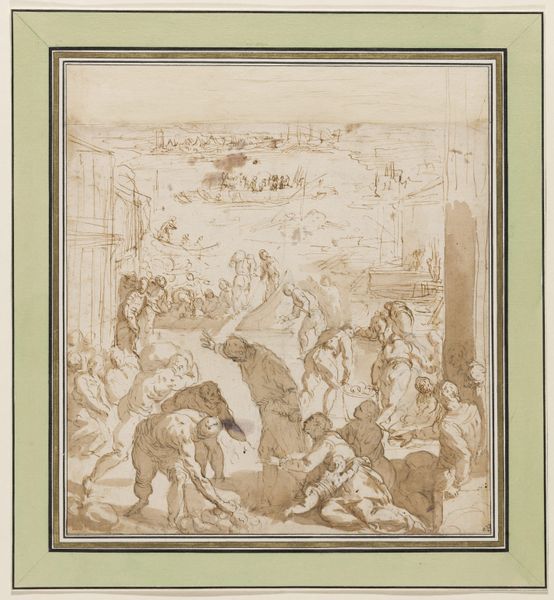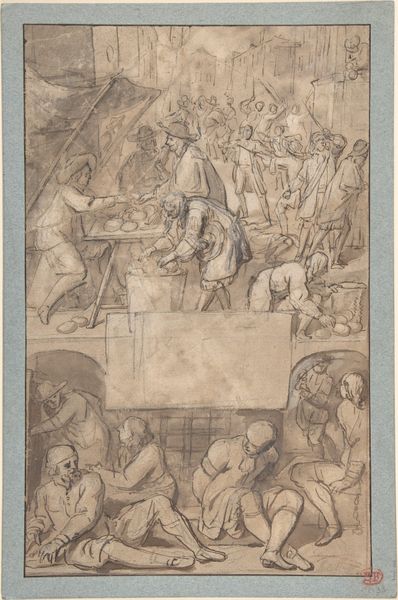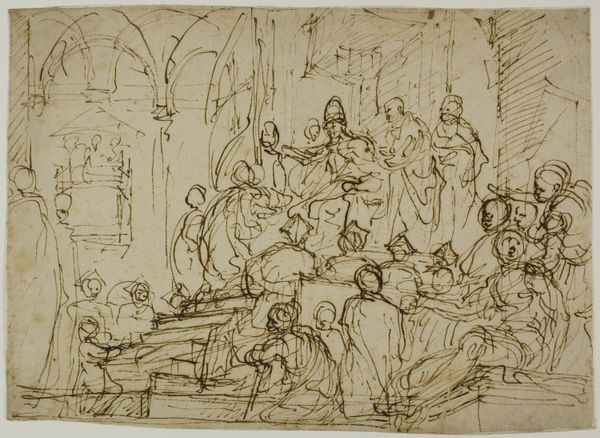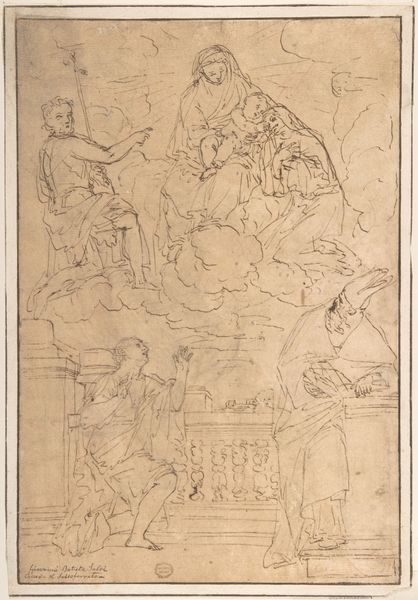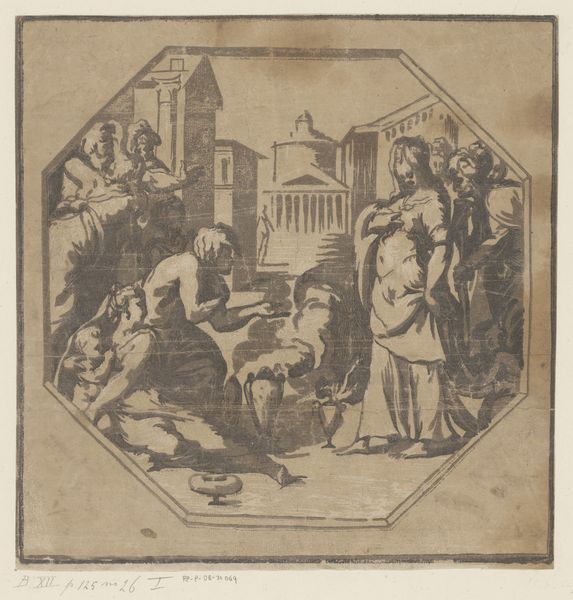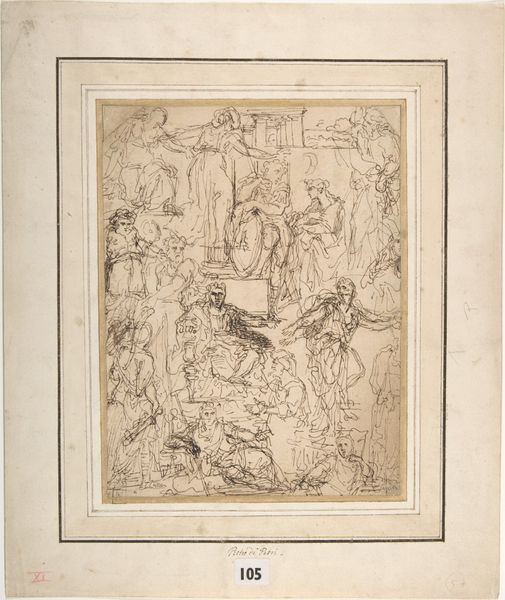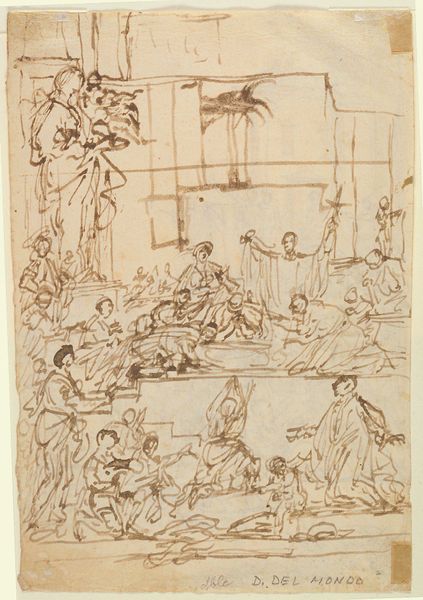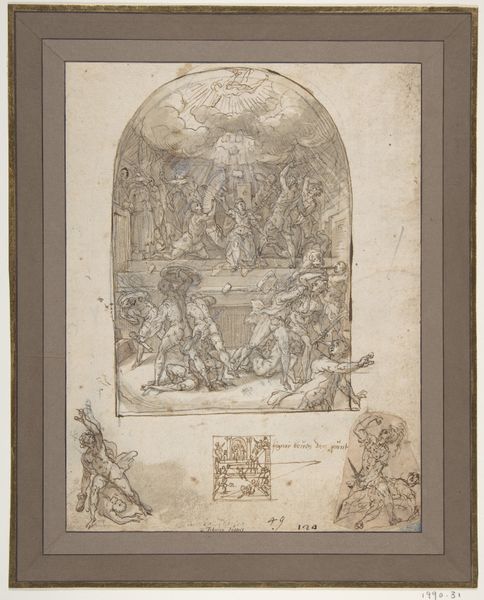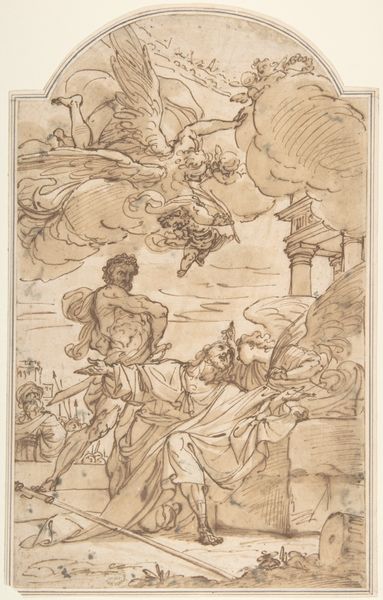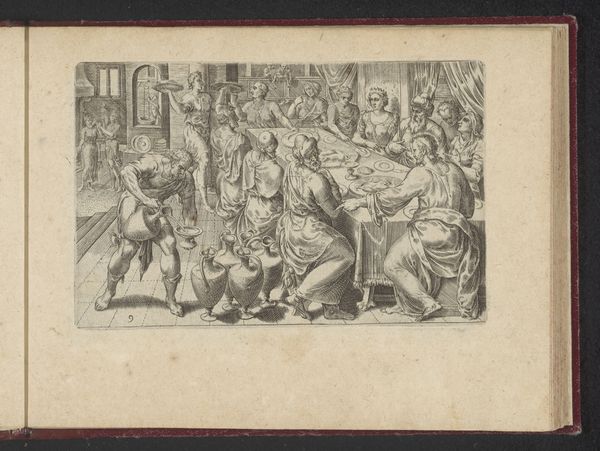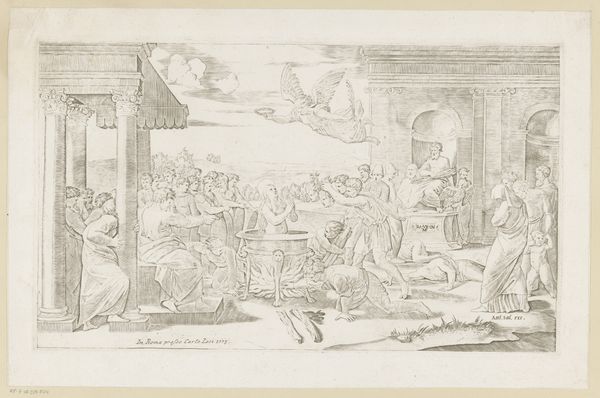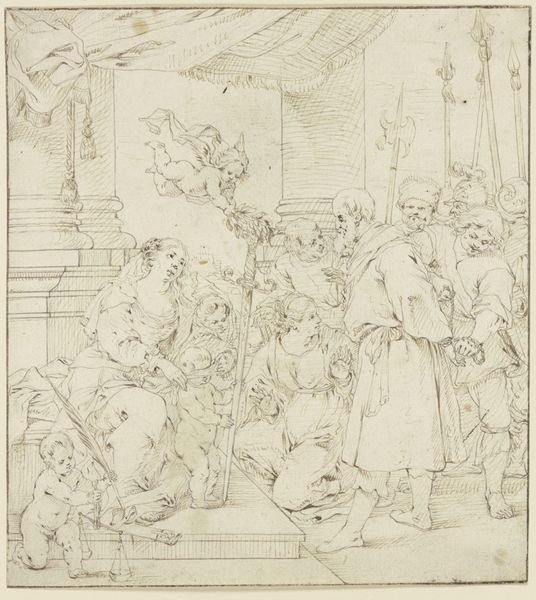
drawing, print, ink, engraving
#
drawing
#
medieval
#
narrative-art
#
ink painting
# print
#
figuration
#
11_renaissance
#
ink
#
cross
#
line
#
history-painting
#
northern-renaissance
#
engraving
#
christ
Dimensions: 7 3/4 x 5 15/16 in. (19.7 x 15.1 cm)
Copyright: Public Domain
Curator: This ink drawing, "Christ Carrying the Cross," made sometime between 1500 and 1600 by Wolfgang Huber, has an immediate visceral impact. The lines seem almost violently etched. Editor: It’s the starkness that gets me, the raw physicality of the cross itself. You can practically feel its weight, pressing down on Christ. Look at the materials: ink on what looks like laid paper. The production here feels significant. Curator: Absolutely, and consider how the social and political context shapes our reading. The image invokes complex questions around religious persecution and authority, themes still so relevant. Notice, for instance, the figures surrounding Christ. There's a distinct lack of empathy in their expressions. The way Huber positions these individuals speaks volumes about power dynamics. Editor: The labor involved in engraving this, though. It is also worth examining. This wasn't some casual sketch. This was a calculated process, intended for reproduction and distribution. Look at the texture—it almost feels tactile. Did Huber use locally sourced ink, or were materials imported? These are all aspects we need to interrogate to have a full understanding of this piece. Curator: I agree about understanding the medium, and I think about how his choices impact how we relate to narratives of oppression. This image seems to make visible the intersection of physical suffering and political domination. What’s missing and what's emphasized in the composition, particularly regarding the figures of power? Editor: Exactly, we have to investigate the socioeconomic aspects of its production. Who was it for, who funded it, what's the labor aspect in printing? I see a statement here, about production, commerce, labor—even within this very recognizable religious image. The level of labor involved challenges common conceptions of art, in a religious work. Curator: It does invite such questions. Examining Huber's work from an intersectional lens reveals his awareness of broader socio-political conflicts during the Renaissance, prompting us to consider art's function in representing trauma and injustice across centuries. Editor: Absolutely. For me, understanding the material processes and conditions under which this was made re-centers the conversation from purely artistic or spiritual, and back to the gritty social realities of the 16th century.
Comments
No comments
Be the first to comment and join the conversation on the ultimate creative platform.
